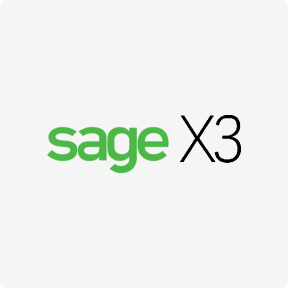In practice, this means you can use MongoDB to store both structured, semi-structured and unstructured data. With MongoDB you can store very simple data, like text files, alongside more complex data, like videos. A modern data platform needs to be able to handle very fast queries and massive datasets using ever bigger clusters of small machines.
This is far different from making developers use a strange system that requires a specialist. Document databases also allow the evolution of the structure of the data as needs are better understood. Collaboration and governance can allow one team to control one part of a document and another team to control another part. Using MongoDB enables your team to go further and faster when developing software applications that handle data of all sorts in a scalable way. Over the years, MongoDB has become a trusted solution for many businesses that are looking for a powerful and highly scalable NoSQL database. But MongoDB is much more than just a traditional document-based database and it boasts a few great capabilities that make it stand out from other DBMS.
The Benefits of MongoDB
This flexibility makes MongoDB a versatile tool across a range of applications, regardless of their development language. You can then use those indexes to improve the performance of searches within MongoDB to provide even more flexibility. The document data model maps naturally to objects in application code, making it simple for developers to learn and use. MongoDB’s scale-out architecture can support huge numbers of transactions on humongous databases. Perhaps most importantly, the developer controls the database schema.
MongoDB Announces Jim Scharf as Chief Technology Officer – PR Newswire
MongoDB Announces Jim Scharf as Chief Technology Officer.
Posted: Mon, 02 Oct 2023 07:00:00 GMT [source]
MongoDB currently provides official driver support for all popular programming languages like C, C++, Rust, C#, Java, Node.js, Perl, PHP, Python, Ruby, Scala, Go, and Erlang. MongoDB has emerged as a database solution that embodies flexibility, scalability, and efficiency. As organizations lean into the future, databases that can adapt, grow, and perform at scale are not just preferable—they’re essential.
Integrating large amounts of diverse data
MongoDB Atlas is the leading global cloud database service for modern applications. Using Atlas, developers can deploy fully managed cloud databases across AWS, Azure, and Google Cloud. While RDBMS uses tables and rows, MongoDB uses documents and collections. In RDBMS a table — the equivalent to a MongoDB collection — stores data as columns and rows.
Sharding is the term for distributing data intelligently across multiple machines. The document model provides flexibility to work with complex, fast-changing, messy data from numerous sources. It enables developers to quickly deliver new application functionality. As more and more business users have joined the MongoDB community, features have been added to support the use and operation of MongoDB in enterprise IT departments. MongoDB now also offers first-class support for customers who need it.
Ready to get started?
MongoDB databases use a query language that’s similar to SQL databases and is extremely approachable for beginner and advanced developers alike. This accessibility makes it easy to push, query, sort, update and export your data with common help methods and simple shell commands. While Cassandra (link resides outside IBM) and MongoDB are both considered NoSQL databases, they have different strengths. Cassandra uses a traditional table structure with rows and columns, which enables users to maintain uniformity and durability when formatting data before it’s compiled. MongoDB supports field, range query, and regular-expression searches.[33] Queries can return specific fields of documents and also include user-defined JavaScript functions.

Most developers find it easy to work with JSON because it is a simple and powerful way to describe and store data. MongoDB’s horizontal, scale-out architecture can support huge volumes of difference between postgresql and mongodb both data and traffic. Get an introduction to the important aspects of cloud storage, including how it works, its benefits, and the different types of cloud storage that are available.
MongoDB vs. MySQL
Therefore, MongoDB provides a fast and scalable data storage service which makes it a popular choice in the performance-critical application. Moreover, the fact that MongoDB has been written in C++ makes it even faster as compared to a lot of other databases. As a document database, MongoDB makes it easy for developers to store structured or unstructured data. This format directly maps to native objects in most modern programming languages, making it a natural choice for developers, as they don’t need to think about normalizing data. MongoDB can also handle high volume and can scale both vertically or horizontally to accommodate large data loads.

MongoDB stock also has a near-perfect IBD Digital Composite Rating of 98 on a 1-99 scale, measuring fundamental and technical performance. As more companies adopt generative artificial intelligence products, Sills said the volume and sophistication of data applications will increase. IBD 50 company MongoDB (MDB) will be a “leading beneficiary of explosive data growth,” according to a new report from Bank of America analysts. MDB stock got a boost in premarket trading after BofA Securities initiated coverage of the company with a buy rating Thursday. Mail us on h[email protected], to get more information about given services. It has an automatic load balancing configuration because of data placed in shards.
What’s the fastest way to get started using MongoDB?
The data can either be loaded into a new format or exported to other data sources. The find() method returns a non-structured list of the documents stored. To enhance the overall performance of your comprehensive MongoDB system, reconsider the use of indexes or, if necessary, implement sharding into your data modelling architecture. If you anticipate a high volume of queries, consider including indexes in your data model to boost query efficiency.

MongoDB is a general-purpose document database designed for modern application development and for the cloud. Its scale-out architecture allows you to meet the increasing demand for your system by adding more nodes to share the load. However, it can’t match MongoDB’s flexibility for handling structured and unstructured data sets or its performance and reliability for mission-critical cloud applications. The company has a huge developer community, a proprietary document storage model and supports 13 programming languages, the report said. A schema-less database means that different types of documents can be stored in the same collection.
AND in MongoDB
One tool that does this analysis for you is Performance Advisor, which analyzes queries and suggests indexes that would improve query performance. If still needed, MongoDB also supports database transactions that allow many changes to a database to be grouped and either made or rejected in a batch. With MongoDB Atlas, the database-as-a-service at the center of the MongoDB Cloud, it is easier than ever to use MongoDB. You can provision a cluster with a few clicks from the web interface and start writing code almost immediately.
- A stage can also use SQL JOIN-like behavior with a $lookup operation.
- Node.js applications are especially problematic because they can rapidly issue a series of asynchronous requests without having to wait until they’ve completed.
- MongoDB supports ad hoc querying by the fields within its document data records.
- The company MongoDB Inc. (New York, United States) maintains and manages the development of MongoDB.
- These data pieces are evenly distributed across multiple physical servers.
- With its flexible schema approach, it’s popular with development teams using agile methodologies.
